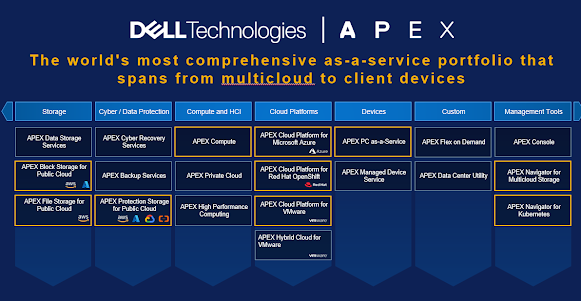VxRail at the Edge – Satellite node introduction
Overview
For your standard VxRail cluster you need a minimum of three nodes for each cluster deployment (yes, yes, there is also a 2-node option) – but what if you already have a VxRail environment and want to deploy a VxRail system to an Edge location?
That is…an Edge location where a two or three-node cluster would be surplus to customer workload requirements? *Cue drum roll…* Enter VxRail Satellite nodes.
VxRail Satellite nodes became available from VxRail software release version 7.0.320 and, in a nutshell, each satellite node is a single VxRail node that will run vSphere and have the same VxRail HCI System software that runs on our VxRail Dynamic node and VxRail with vSAN offerings.
They are ideal for Edge locations where compute, memory or storage-intensive applications are not required.
Satellite nodes do not get added to any clusters; however they do require that an existing VxRail (with vSAN) cluster has been deployed. Each satellite node will be assigned a single IP management address and up to 500 satellite nodes can be managed by an external vCenter through this VxRail management cluster.
Figure 1 – Satellite node managed by VxRail management cluster
Figure 2 – Easy conversion from embedded to external vCenter
The common operating model provided by vSphere and VxRail HCI Software means that customers can have that VxRail experience from their Core through to their Edge solutions, while that ever-useful lifecycle management of the satellite nodes and VxRail management cluster is supported through VxRail Manager.
As these are individual nodes, they do not leverage VMware vSAN technology that you would typically see for a VxRail cluster, and instead they use their own local storage devices – with the ability to increase protection of data and VMs from disk failures with the use of PERC H755 controllers.
Right now, Dell will be offering these nodes on our E660, E660F and V670F platforms which are part and parcel of our 15th Generation VxRail node offerings.
Key VxRail Satellite node features:
vSAN will not ship on these nodes (No vSAN license required = $-saving)
Requires a VxRail with vSAN cluster for management
External vCenter only
Unified lifecycle management with VxRail software for Satellite nodes and VxRail management cluster
Available on E660, E660F and V670F VxRail platforms
PERC H755 controllers are supported for RAID configuration PERC (LCM and serviceability are supported)
Use case examples:
o Edge locations: Retail, Telco-Edge etc
o Test/DEV or Legacy Application Workloads (not compute, memory or storage
intensive)
Deployment of VxRail Satellite Nodes:
The deployment of VxRail satellite nodes is easy and customers can deploy the nodes themselves.
Satellite nodes are added, removed and updated from one access point in vCenter using VxRail Manager – and once deployed, it won’t be possible to reconfigure the node to add to a standard VxRail cluster, this can only be done by without a re-image and factory re-set.
Take a look at my video ‘How to configure and add a VxRail Satellite node’ at the bottom of this post for guidance on how to complete this task.
Key deployment prerequisites/points of interest:
- Verify that the workload requirements of the node location will not exceed the resource capacity of the satellite node
- The VxRail management network must be able to route externally
- Single management IP address is assignedto satellite node enable connectivity to the VxRail cluster
- The satellite node must be added at the same software and firmware version of the VxRail management cluster
- Satellite nodes cannot be reconfigured to join a cluster
- VxRail Manager, which is deployed on the external management network, must be able to discover every planned satellite node by IP address
Upgrades
The lifecycle management, or LCM, of satellite nodes is completed through VxRail HCI software and is similar to the LCM of other VxRail nodes. There are some differences between the LCM of satellite nodes and LCM of VxRail nodes with vSAN;
- Satellite node upgrades are driven from the managed folder object instead of a VxRail cluster object
- Satellite node LCM bundles do not contain VxRail Manager or vCenter updates.
- Only updates for the firmware, drivers and applications of the satellite node will be included in the bundle
- VMs on satellite nodes must be powered off during upgrades (cannot migrate VMs to another node like vSAN clusters)
- Up to 20 satellite nodes can be upgraded at the same time
- The management cluster must be upgraded in advance of starting the Satellite node upgrade. If this is not completed, the satellite LCM bundle will not become available the user in vCenter (see figure 4 below).
Take a look at my video ‘How to upgrade a VxRail Satellite node’ at the bottom of this post for step-by-step guidance on how to upgrade your VxRail satellite node.
Figure 3 – Satellite node managed folder
Figure 4 - No Available Recovery Bundles
Conclusion and Videos:
With our addition of VxRail dynamic nodes from VxRail version 7.0.240 (see our post Extending the Enterprise Storage Footprint with Dell EMC Storage and VxRail Dynamic Nodes) and now satellite nodes from VxRail 7.0.320, customers are getting more and more choice and flexibility for extending their VxRail environment.
Here are two videos that will give you further operational insight into the deployment and upgrade of your VxRail satellite nodes. Enjoy!
· How to configure and add a VxRail Satellite node
· How to upgrade your VxRail Satellite nodes
Opinions expressed in this article are entirely our own and may not be representative of the views of Dell Technologies.







Comments
Post a Comment